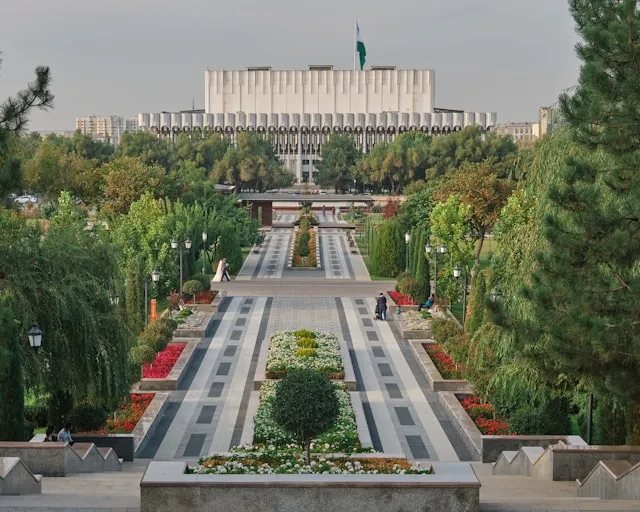Cross-border commercial disputes involving Uzbekistan and Kazakhstan increasingly call for the strategic use of international arbitration. Both countries have modernised their legal systems to attract investors and offer transparent and efficient dispute resolution options. Yet, many large-scale disputes still look to London as the trusted seat or court for complex, high-value cases.
In this article, I examine the latest arbitration developments in Uzbekistan and Kazakhstan, common dispute types, and London’s continued place in resolving complex international disputes erupting within Central Asia.
Arbitration Reform and Institutional Growth in Uzbekistan and Kazakhstan
Both Uzbekistan and Kazakhstan have made major advances in arbitration reform in recent years, aiming to align with international standards and enhance investor confidence.
Uzbekistan Arbitration Reforms
The Astana International Financial Centre (AIFC) is Kazakhstan’s flagship financial centre in Astana, operating under a distinctive legal framework, with English as the primary language. Modelled on the English common law system, with an independent AIFC Court and International Arbitration Centre, the AIFC aims to position Astana as a regional gateway for capital and investment across Central Asia.
The AIFC Court has produced 205 judgments in its history with 100% enforcement rate.
The Tashkent International Arbitration Centre (TIAC), established in 2018, has quickly gained international recognition. By early 2025, its caseload had tripled compared to the previous year, with disputes involving parties from Europe, the Middle East, China, and South Asia. TIAC now handles a wide range of cases, including commercial contracts, joint ventures, and technology disputes such as blockchain.
In addition, the proposed Tashkent International Commercial Court (TICC) will create an opportunity for foreign investors to apply to the courts in Uzbekistan on the basis of international common law.
Common Disputes in Uzbekistan and Kazakhstan Arbitration
Arbitration cases in Central Asia are often linked to large-scale energy, mining, and construction projects.
One of the largest examples is the Kashagan oilfield arbitration, involving KazMunayGas, Eni, Shell, ExxonMobil, TotalEnergies, CNPC, and INPEX. The dispute, seated in Geneva under the Permanent Court of Arbitration (PCA), concerns claims exceeding $150 billion and is expected to continue until 2028. Kazakhstan is also pursuing related domestic proceedings, highlighting the interplay between international arbitration and local enforcement.
Similarly, the Karachaganak gas-condensate dispute before the Stockholm Chamber of Commerce (SCC) involves Shell, Eni, Chevron, and KazMunayGas. It centres on profit-sharing and cost recovery, illustrating the complexity of Kazakhstan arbitration and the need to coordinate international and domestic legal strategies.
Why London Remains a Leading Arbitration Seat
Although Tashkent and Astana arbitration centres are developing rapidly, London continues to often be the preferred choice for arbitration concerning high-value disputes.
Older contracts often specify London, Geneva, or Stockholm as the seat of arbitration, reflecting long-standing trust in these established jurisdictions. London offers experienced and independent arbitrators and reliable enforcement under the New York Convention. These factors make London particularly attractive for energy and infrastructure disputes involving Uzbek and Kazakh entities.
The Role of Chinese and Middle Eastern Investors
The rise of Chinese and Middle Eastern investors in Central Asia is changing regional arbitration preferences. These investors often favour venues such as Dubai (DIAC), Singapore (SIAC), Hong Kong (HKIAC), and the Astana International Arbitration Centre (IAC).
These arbitration seats frequently blend English law principles with regional rules and offer flexible dispute resolution mechanisms. For projects linked to China’s Belt and Road Initiative, mediation is often integrated into arbitration procedures.
Wrapping up
For small and medium international disputes, it is now possible to have them resolved in the region. However, London is still a highly relevant arbitration seat for complex, high-value international commercial disputes, especially those involving Russian sanctions, attempts to enforce Russian jurisdiction under Article 248.1 of the Russian Arbitrazh (Commercial) Procedural Code APC, and corresponding anti-suit injunctions.
Frequently Asked Questions
What arbitration institutions are active in Uzbekistan and Kazakhstan?
Uzbekistan’s main institution is the Tashkent International Arbitration Centre (TIAC), while Kazakhstan’s key bodies are the AIFC Court and the International Arbitration Centre (IAC) in Astana.
Why is London still the leading arbitration seat for Central Asia disputes?
London offers neutrality, expert arbitrators, and strong enforcement under the New York Convention, making it ideal for Uzbekistan and Kazakhstan arbitration cases.
How does the AIFC Court differ from Kazakhstan’s national courts?
The AIFC Court applies English common law principles and operates entirely independently from Kazakhstan’s domestic judiciary.
Which sectors generate the most arbitration cases in Central Asia?
Energy, mining, and construction are the dominant industries, often involving complex, multi-party contracts.
How do Chinese and Middle Eastern arbitration seats influence Central Asia dispute resolution?
Venues such as Dubai, Singapore, and Hong Kong combine English law with regional practices, offering greater flexibility for investors and contractors operating across Central Asia.
To discuss any points raised in this article, please call us on +44 (0) 203972 8469 or email us at mail@eldwicklaw.com.
This article does not constitute legal advice. For further information, please contact our London office.
Share this Post



